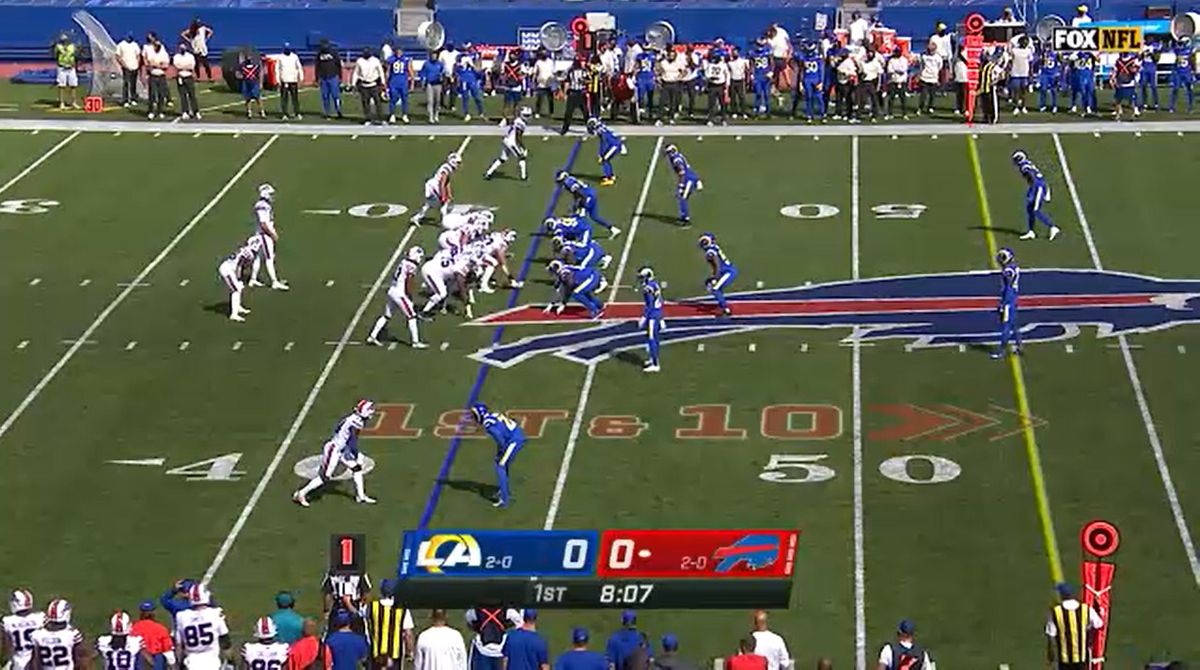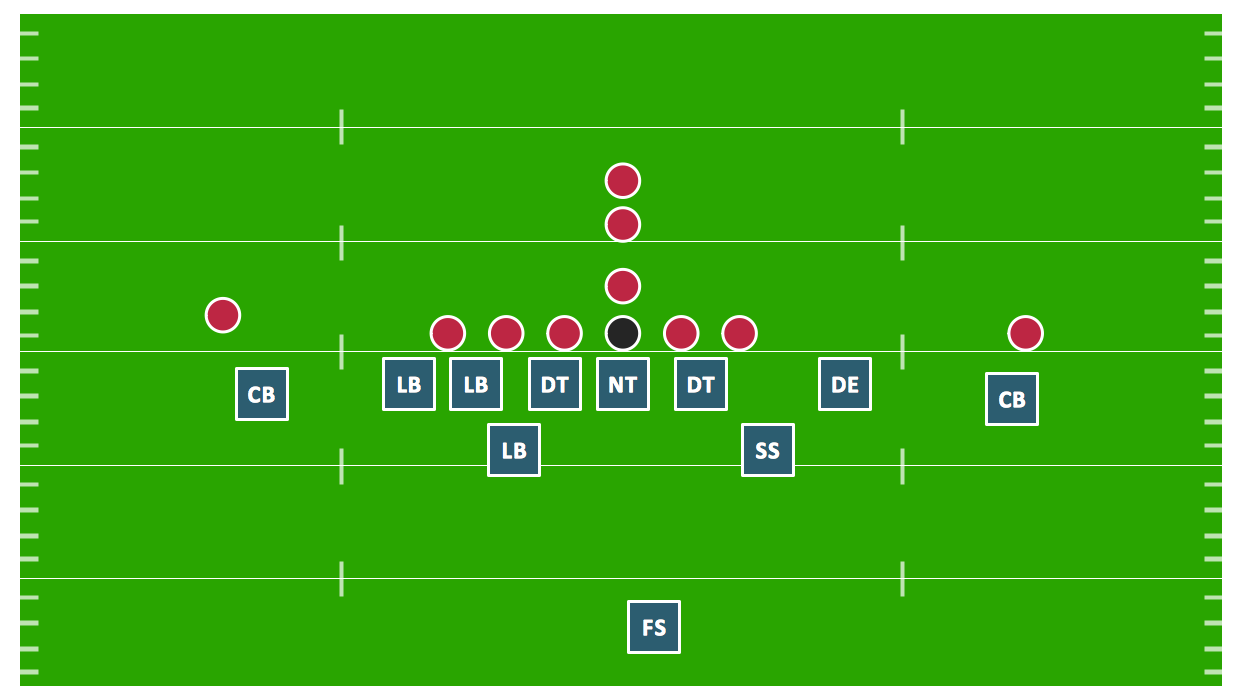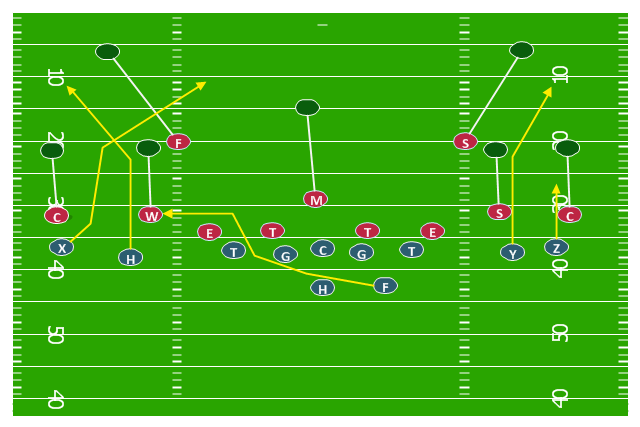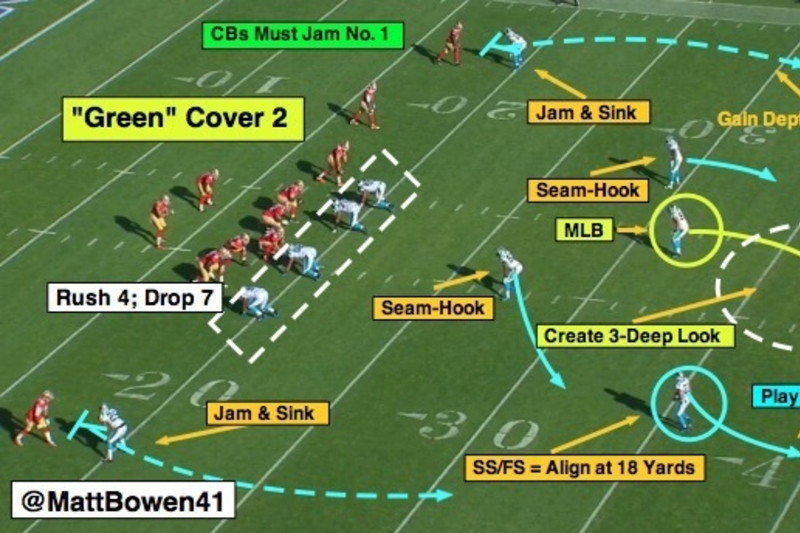Introduction

In the high-octane world of the NFL, defense often determines the difference between victory and defeat. While offensive fireworks grab headlines, it is the defensive prowess that frequently wins championships. The importance of a strong defense in the NFL cannot be overstated; it is the backbone that supports a team’s overall strategy, disrupts opponents’ plans, and creates game-changing opportunities. From bone-crushing tackles to strategic interceptions, defense is the unsung hero that keeps the scoreboard in check.
Defensive tactics in the NFL have undergone significant evolution over the years. In the early days, defenses relied on sheer physicality and basic formations to stop offenses. As the game progressed, innovative minds began to develop more complex strategies, leading to the diverse and sophisticated defensive schemes we see today. Coaches like Buddy Ryan and Bill Belichick have revolutionized defensive play, introducing concepts such as the 46 defense and hybrid schemes that have reshaped the landscape of the NFL.
The purpose of this article is to delve into the key defensive tactics used in the NFL. We will explore the history and evolution of these tactics, break down basic and advanced defensive formations, and highlight the roles of key defensive players. By understanding these elements, we can appreciate the intricate chess match that unfolds on the field every Sunday. Whether you are a seasoned fan or new to the game, this exploration will provide valuable insights into the defensive strategies that make NFL football a thrilling and strategic sport.
History of Defensive Tactics
Early Days of NFL Defense
In the early days of the NFL, defensive play was predominantly about physicality and straightforward formations. Teams often relied on basic setups like the 7-2-2 or the 6-3-2, designed to stop the run, which was the primary offensive strategy at the time. The emphasis was on overpowering the offensive line with sheer strength and numbers, with little need for the complex schemes we see today. Players focused on tackling, covering basic zones, and reacting to the plays as they developed. The simplicity of these early defensive tactics mirrored the less sophisticated offensive strategies they faced.
Key Historical Shifts and Influential Defensive Coaches
As the game of football evolved, so did the tactics used on the defensive side of the ball. One of the first major shifts occurred with the increased use of the forward pass, which required defenses to adapt quickly. Coaches like George Halas and Tom Landry were pioneers in this era, introducing more complex defensive alignments. Halas’s development of the T-formation necessitated corresponding defensive innovations to counter the newfound offensive strategies.
The 1970s and 1980s were marked by further revolutionary changes, spearheaded by influential coaches such as Buddy Ryan and Bill Parcells. Ryan’s creation of the 46 defense for the 1985 Chicago Bears was a game-changer. This aggressive scheme stacked the line of scrimmage with defenders, creating immense pressure on the quarterback and causing chaos for offensive lines. Meanwhile, Bill Parcells emphasized a versatile and adaptive defensive approach, focusing on strong, physical play and strategic adjustments to exploit offensive weaknesses.
Evolution of Defensive Schemes Over the Decades
The evolution of defensive schemes in the NFL has been a continuous process, driven by the need to counter increasingly sophisticated offensive strategies. In the 1990s, the introduction of more pass-heavy offenses led to the rise of Nickel and Dime packages, which added extra defensive backs to better cover the multiple wide receiver sets. Coaches like Tony Dungy popularized the Tampa 2 defense, which emphasized zone coverage and keeping plays in front of the defense.
In recent years, the trend has been towards hybrid defenses that can seamlessly transition between different looks and formations. Defensive coordinators like Bill Belichick have mastered the art of disguise, using pre-snap movements and versatile players to keep offenses guessing. Modern defenses now incorporate elements from various schemes, blending traditional concepts with innovative tactics to handle the diverse offensive threats they face in today’s NFL. For more on the evolution of defensive tactics, visit NFL Evolution.
Basic Defensive Formations
Overview of Common Defensive Formations
The foundation of any NFL defense lies in its formations. Among the most prevalent are the 4-3, 3-4, Nickel, and Dime formations. Each has its own unique structure and strategic advantages, tailored to counter various offensive schemes.
4-3 Formation

In the 4-3 formation, the defense lines up with four defensive linemen and three linebackers. This setup is designed to provide a balanced approach to stopping both the run and the pass. The four defensive linemen are responsible for controlling the line of scrimmage, with two defensive ends often tasked with rushing the quarterback and two defensive tackles playing inside to stop the run.
Typical Uses: The 4-3 formation is commonly used to defend against traditional offensive sets, especially when the offense has a tight end on the field. It’s effective against both running plays and passing plays, providing versatility in various situations.
Pros:
- Strong against the run due to the four linemen.
- Balanced approach to defending both the run and pass.
- Versatility allows for adjustments based on offensive formations.
Cons:
- Can be less effective against passing plays with multiple wide receivers.
- Requires highly skilled linebackers to cover a broad range of responsibilities.
3-4 Formation
The 3-4 formation features three defensive linemen and four linebackers. This setup emphasizes flexibility and the ability to disguise defensive intentions. The three linemen focus on occupying blockers, allowing the four linebackers to make plays on the ball. The outside linebackers are often key pass rushers in this scheme.
Typical Uses: The 3-4 formation is particularly effective against teams that favor passing or have strong running backs. It’s also useful for creating confusion for the quarterback, as the defense can easily switch between rushing and dropping into coverage.
Pros:
- Versatile and adaptable to different offensive looks.
- Strong against both the pass and the run.
- Provides opportunities for complex blitz packages.
Cons:
- Requires exceptionally skilled linebackers.
- Can be vulnerable to power running plays if the defensive linemen are overwhelmed.
Nickel Formation
The Nickel formation adds an extra defensive back, resulting in five defensive backs on the field. Typically, this means one linebacker is removed in favor of the additional defensive back. This formation is designed to defend against passing plays, especially when the offense employs multiple wide receivers.
Typical Uses: The Nickel formation is specifically used in obvious passing situations, such as long third downs. It’s effective in covering wide receivers and tight ends, limiting the offense’s ability to complete passes.
Pros:
- Strong pass coverage with five defensive backs.
- Effective against offenses with multiple wide receivers.
- Adds speed and agility to the defense.
Cons:
- Weaker against the run due to fewer linebackers.
- Can be outmatched by power running plays.
Dime Formation
The Dime formation features six defensive backs, removing another linebacker or defensive lineman to add the extra defensive back. This formation is highly specialized for defending against the pass, offering maximum coverage against multiple wide receiver sets.
Typical Uses: The Dime formation is primarily used in obvious passing situations, such as third-and-long or late-game scenarios when the offense is trying to catch up.
Pros:
- Excellent pass coverage with six defensive backs.
- Highly effective against deep passing plays and multiple wide receiver sets.
- Provides great flexibility in pass defense.
Cons:
- Highly vulnerable to running plays.
- Reduced ability to pressure the quarterback with fewer defensive linemen.
Advanced Defensive Strategies

Blitzing is a key component of advanced defensive strategies in the NFL, designed to create pressure on the quarterback and disrupt the offensive rhythm. There are various types of blitzes, each with its own specific purpose. The zone blitz involves defenders dropping into zone coverage while others rush the quarterback, creating confusion and increasing the chances of a hurried throw or a sack. Safety blitzes send a safety from the secondary to pressure the quarterback, adding an element of surprise since safeties typically play deep in coverage. A cornerback blitz brings a cornerback, usually responsible for covering a wide receiver, into the pass rush, exploiting gaps in the offensive line and catching the quarterback off guard.
Coverage schemes are fundamental to a defense’s ability to contain the passing game. Man-to-man coverage assigns each defender to cover a specific offensive player, allowing for tight, aggressive defense but requiring high individual skill and athleticism. Zone coverage, on the other hand, involves defenders covering designated areas of the field, allowing them to react to the play as it develops and providing better support against short and intermediate passes. Hybrid coverage blends elements of both man-to-man and zone schemes, offering flexibility and adaptability to counter various offensive tactics.
Stunts and twists are techniques used by defensive linemen to disrupt the offensive line’s blocking assignments. In a stunt, a defensive lineman will loop around another lineman to attack a different gap, causing confusion and often creating an open path to the quarterback. Twists involve two or more linemen exchanging roles post-snap, again aiming to confuse the offensive line and create pressure. These tactics are crucial for breaking down the protection schemes and forcing the quarterback into hurried decisions or mistakes.
Overall, advanced defensive strategies are designed to maximize confusion and pressure on the offense, leveraging the strengths and skills of defensive players to disrupt and neutralize the offensive game plan. Whether through creative blitz packages, varied coverage schemes, or intricate line stunts, defenses continuously adapt and innovate to stay ahead of the evolving offensive strategies in the NFL.
Defensive Player Roles
Breakdown of Key Defensive Positions and Responsibilities
In the NFL, each defensive player has a specific role that contributes to the overall strategy of stopping the opposing offense. Understanding the breakdown of key defensive positions and their responsibilities is essential to appreciating the intricacies of defensive play.
Defensive Line: The defensive line is the first line of defense, consisting of defensive ends and defensive tackles. These players are responsible for controlling the line of scrimmage, stopping the run, and pressuring the quarterback. Defensive ends focus on containing the edges and rushing the passer, while defensive tackles, positioned in the middle, aim to disrupt the interior of the offensive line and tackle running backs at the line of scrimmage.
Linebackers: Linebackers play a critical role in both run defense and pass coverage. Positioned behind the defensive line, linebackers are divided into inside and outside roles. Inside linebackers are typically tasked with reading the play and stopping the run, often serving as the defensive leaders on the field. Outside linebackers, especially in a 3-4 formation, are frequently used as pass rushers and are responsible for setting the edge against running plays and covering tight ends or running backs in pass coverage.
Cornerbacks: Cornerbacks are the primary pass defenders, assigned to cover wide receivers. Their main responsibilities include preventing receptions, intercepting passes, and providing support in run defense. Cornerbacks must possess excellent speed, agility, and coverage skills to keep up with the league’s top receivers and to react quickly to the ball. For more on cornerback techniques, check out this guide on cornerback techniques.
Safeties: Safeties, positioned at the back of the defense, are the last line of defense. There are typically two types of safeties: free safeties and strong safeties. Free safeties often play deep in coverage, reading the quarterback and providing help over the top to cornerbacks. Strong safeties are more involved in stopping the run and covering tight ends or running backs. Both types need to be versatile, capable of supporting the pass and the run effectively.
Role-Specific Tactics and Responsibilities
Role-specific tactics and responsibilities vary by position. Defensive linemen use techniques such as stunts and twists to confuse blockers and create pressure. Linebackers employ blitzes and drop into coverage based on the play call. Cornerbacks utilize man-to-man or zone coverage skills to shadow receivers, while safeties adjust their positioning to support the defensive scheme and react to the play. For more on defensive line techniques, visit Defensive Line Techniques.
The importance of player versatility in modern defenses cannot be overstated. As offenses become more complex and varied, defenses must adapt by having players capable of performing multiple roles. Versatile defenders can disguise their intentions, switch seamlessly between coverage and pass rush duties, and adjust to offensive adjustments on the fly. This adaptability is crucial for modern defenses to keep pace with the ever-evolving strategies of NFL offenses, making versatility a key attribute for defensive success.
Case Studies: Successful Defensive Teams

1985 Chicago Bears
The 1985 Chicago Bears are legendary for their aggressive and overpowering defense, which played a pivotal role in their Super Bowl XX victory. Coached by Buddy Ryan, the Bears’ defense employed the famous “46 Defense,” a scheme designed to apply relentless pressure on the quarterback. This formation overloaded one side of the offensive line with defenders, creating confusion and allowing for frequent blitzes from various angles. The Bears’ defense was characterized by its physicality, speed, and the ability to create turnovers. Players like Mike Singletary, Richard Dent, and Dan Hampton became household names due to their exceptional performances within this system. For more on the Bears’ tactics, check out this detailed analysis.
2000 Baltimore Ravens
Another hallmark of defensive excellence was the 2000 Baltimore Ravens. Their defense is widely regarded as one of the best in NFL history, culminating in a dominant performance during Super Bowl XXXV. Under the guidance of defensive coordinator Marvin Lewis, the Ravens employed a 4-3 base defense that emphasized stopping the run and creating turnovers. The key to their success was the incredible play of their linebackers, particularly Ray Lewis, and their stout defensive line, featuring players like Sam Adams and Tony Siragusa. The Ravens’ defense allowed the fewest points in a 16-game regular season and was instrumental in their Super Bowl run. For an in-depth look at the Ravens’ defensive strategies, visit this comprehensive overview.
Lessons Learned from Their Success
The success of these teams teaches several valuable lessons about defensive football. First, the importance of innovative coaching cannot be overstated. Both Buddy Ryan and Marvin Lewis devised schemes that maximized the strengths of their players and exploited the weaknesses of their opponents. Second, a dominant defense relies on having a mix of versatile and specialized players who can execute the game plan effectively. Third, creating pressure on the quarterback and generating turnovers are crucial for disrupting the opposing offense’s rhythm and gaining a strategic advantage.
Additionally, these teams demonstrated the power of defensive cohesion and communication. The Bears and Ravens were not just collections of talented individuals; they operated as well-coordinated units where each player understood their role and executed it flawlessly. Their legacies show that with the right strategy, personnel, and execution, a defense can carry a team to championship glory.